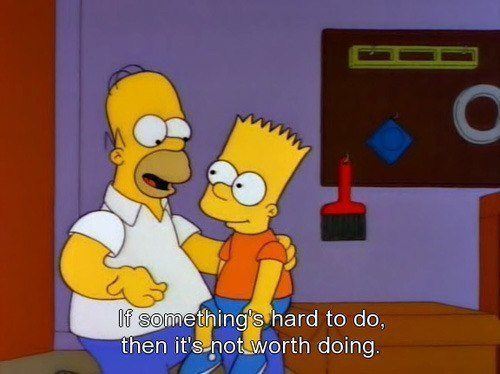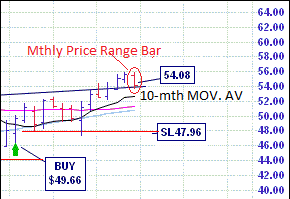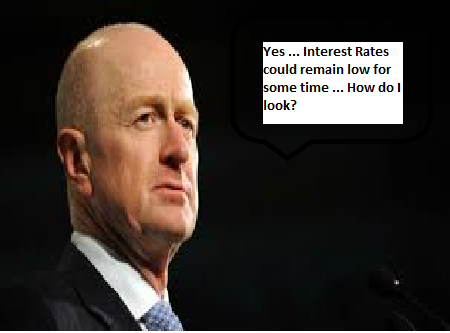
Now Slack Investor admits to being a lucky bloke. and recognizes that many are doing it tough and just haven’t got the income to engage on a savings program. This post is not for you, and I hope that your fortunes will turn around soon. This post is the first in a series – for people with choices on how they spend their income.
Save more than you spend … Duh! – Obvious you would think – Sorry Homer, It is worth doing!
According to a June 2018 Members Equity survey , of Australian households, less than half of them are putting something into the savings bucket each month.
Households who ‘typically spend less than they
earn each month’ (i.e. savers) eased further to 48%
Not only are the savers decreasing, but at the other end of the scale, the number of households that are in financial distress is increasing. The ME Bank report shows that more Australians are overspending – households who ‘typically spend all of their income and more’ increased 3 points to 11% during the six months to June 2018. Cripes!
Now the hard truth is out there … what can you do? Slack investor doesn’t pretend to have invented how to save. Any financial website will contain similar information. The advice is sound because it works. Just get started … this is the first step.
- “Go and have a long hard look at yourself in the hall of mirrors” Roy and HG
- Analyze your financial situation … Over a month or two, see what is coming in and what is going out. Many banking apps assign categories for your monthly spending in your statements. A pen and paper would do, but free software makes this task easy ( e.g. for PC, MS Money Sunset (Slack Investor way); or Phone: Pocketbook). Track your financial habits – you have to get an idea of what is going on in your financial world first … and then, take control.
2. Set yourself some savings goals. ...
Now the interesting part, and this is the “Art of the Possible”. Be realistic here and set goals that you can actually get done. Unless you can you work more hours or get an additional job, it is difficult to adjust the income side. The real power you have is over your spending. There are some things that you just have to spend – Rent, Bills, food etc. However, it is the discretionary things that need looking at. It doesn’t mean that you cant have fun anymore … just less expensive fun!
“The purpose of discipline is to live more fully, not less.” Master Po – From Kung Fu (see below)
The objective is to build up some savings – for a house or retirement. Naturally, if you have any personal debt (Credit Cards, Personal loans) you should get rid of this first. Keep your savings account separate from all others. The best savings method is what works with you – It can be a jar, or a monthly transfer from your transaction account to your savings account. Young Slack investor always found saving easier if he didn’t see the money. – A direct debit just after payday into your savings account will get this done.
What you should aim for when you get your first full-time job is to set up good habits. There is a good “Rule of Thumb” known as the 50:30:20 rule where you divide up your take home salary into parts – 50% for essentials, 30% for discretionary items (Fun!) and 20% for saving. There is a little bit of mathematics to back up this 20% savings rate. The Money Under Thirty table calculates that it will take 41 years of 20% saving (earning 5%) to get your savings to 25 times your inflation adjusted income – This is the amount that is generally agreed to be sustainable using investment earnings to replace your income, using the 4% rule.
Do not despair with these calculations, they are just a rough guide – and there are some things going in your favour as:
- You don’t need to replace your whole income in retirement – just enough to cover your yearly expenses.
- Over the long term, investment return earnings would hopefully better than 5% – this will get you to your goal quicker.
- In Australia, if you earn over $450 per month, your employer is already contributing 9.5% of your wages to your retirement savings (Superannuation).
- In Australia, we are in the very fortunate to have Medicare, a universal health system that subsidises health care for Australian citizens and permanent residents.
- Although Slack Investor encourages readers to aim for complete financial independence in retirement. Under current rules, for Australians, there is a “sweet spot” for home owning couples of $400 000 in superannuation savings. Using a mix of the Age Pension and Super, couples can have a retirement income of $52,395 per annum. This bizarre sweet spot will be expanded upon in later posts.
3. Build an emergency fund.
In June 2018, a significant majority of households (62%) continued to report that they ‘could not easily raise $3,000 for an emergency’ – a percentage point lower than six months ago … ME Bank survey
Do not be part of this 62%, it is so important to have that “cushion of cash” – from which your financial independence can build. You must be ready for the many unexpected things that life can throw at you -$3000 in an online account is a good start and will help you sleep better at night.

The next part of the Slack Way to Financial freedom is Investing. But, to paraphrase Master Po from the old TV Series (1972) Kung Fu
“Grasshopper … you are not ready for this … until you have mastered saving”
PS … If the discipline of saving gets too much, I recommend a bit of Youtube Roy and HG magic (12:39) here for light relief.













